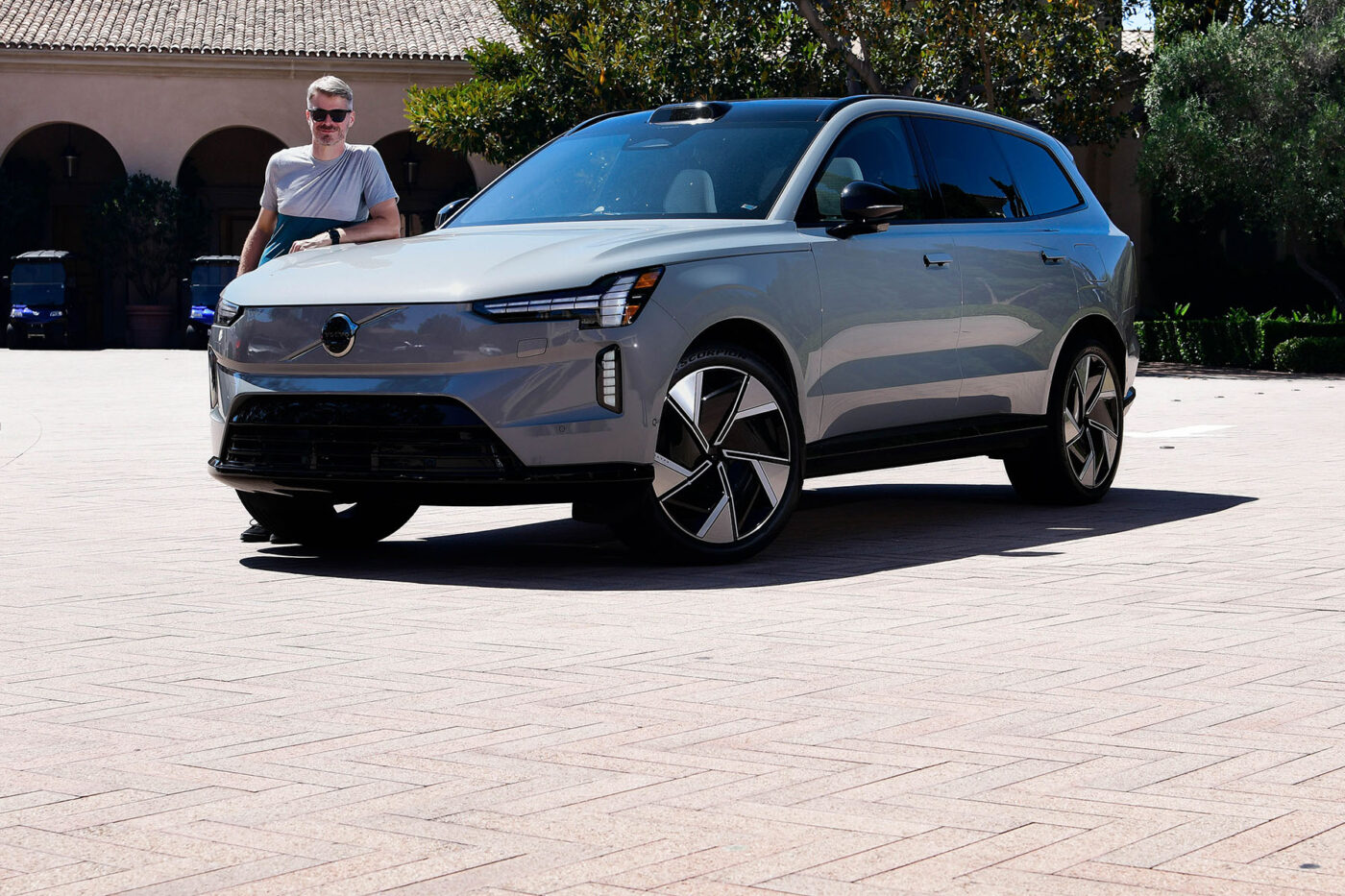
First drive in the Volvo EX90: Was it worth the wait?
When Volvo presented the new generation of its flagship XC90 in 2014, it was indeed a model première with far-reaching consequences for the company: The SPA (Scalable Product Architecture) platform was henceforth used for all 60 and 90 model series, and the five-cylinder motors that had been characteristic of Volvo for so long were discarded – even the five-metre XC90 SUV only used two-litre four-cylinder motors, which still characterise Volvo’s mid-size and large models today. Incidentally, it was the first model to be developed under the aegis of Geely.
With the EX90, the headlines were no longer dominated by the Chinese company’s entry or the omission of a cylinder, but by the fact that the model was presented in November 2022 as a purely electric car – and the fact that production planned for 2023 was cancelled due to software problems. In fact, the car has only been rolling off the production line at the US plant in Charleston (South Carolina) since this June. The first units are due to be delivered in the US and Europe this year.
It is not only the production location that makes it clear where the Swedes see the largest market for their new electric SUV. The first test drives took place in California, an hour’s drive south of Los Angeles. At 5.04 metres long, the EX90 is not yet overly large by US standards, but you can imagine the car on the Pacific Coast Highway near Newport Beach rather than in a German city centre car park. However, its size has not prevented the predecessor XC90 from achieving a certain degree of sales success in Europe – even if Volvo’s volume is increasingly shifting towards the smaller model series, right up to the EX30. Incidentally, the ‘old’ XC90 is not being phased out completely but is being given a facelift to complement the range as a mild and plug-in hybrid for a few more years.
Three drive systems at launch
However, we are focussing on the all-electric EX90. For the first test, Volvo presented the top-of-the-range EX90 Twin Motor Performance variant, which delivers 380 kW of power and 910 Nm of torque. Below this is the 300 kW Twin Motor AWD, which, like the Performance version, uses a 111 kWh battery (net: 107 kWh). The EX90 Single Motor RWD (205 kW) ‘only’ has a 104 kWh battery.
With a Volvo-typical top speed of 180 kph and 4.9 seconds from standstill to 100 kph, the EX90’s key data does not exactly sound like a top model in times of crazy electric car performance, but that is only on paper. The EX90 impressed with an extremely refined and clean drive set-up – probably a more important feature for the brand’s customers than a tenth of a second in acceleration.
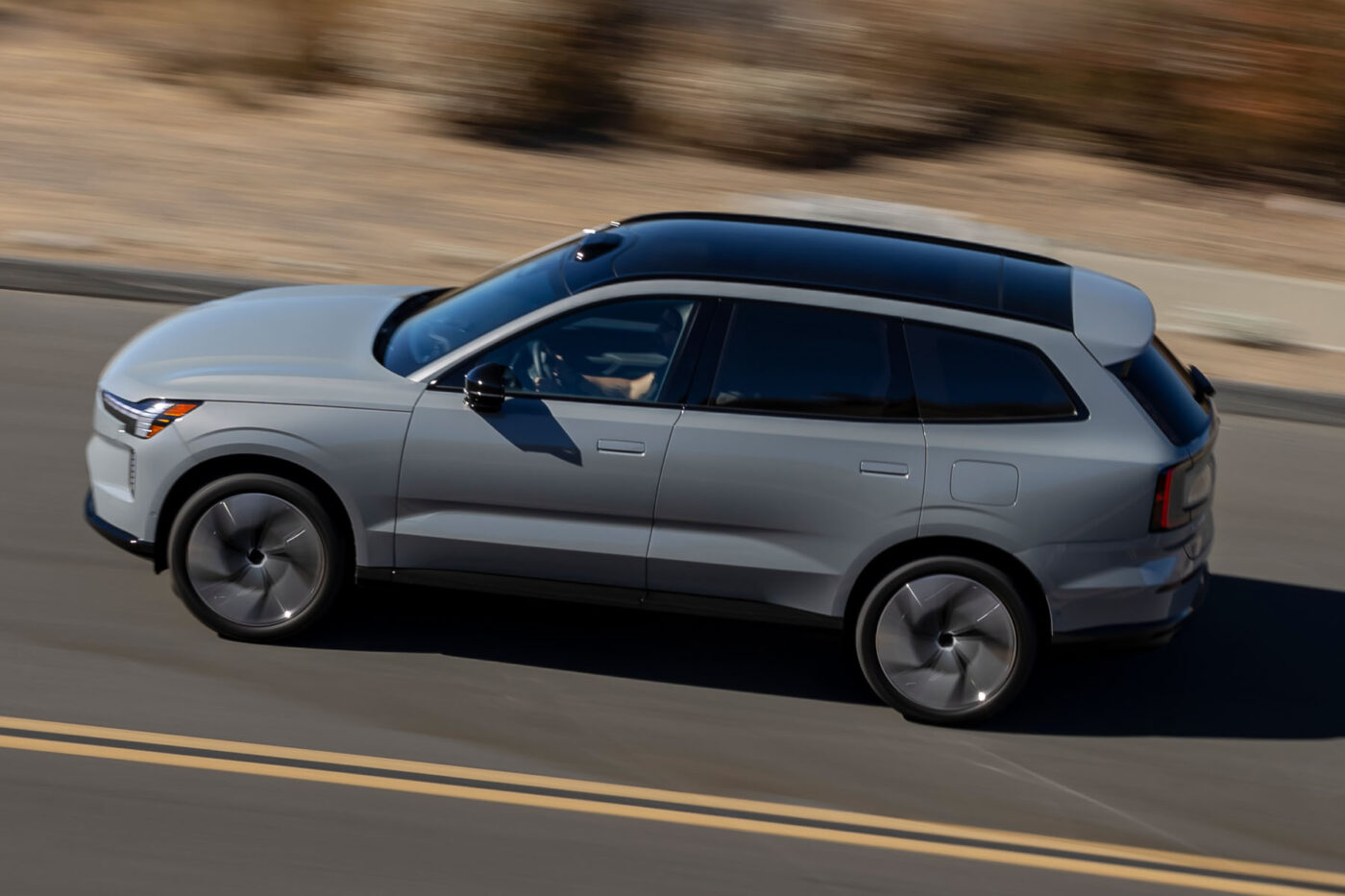
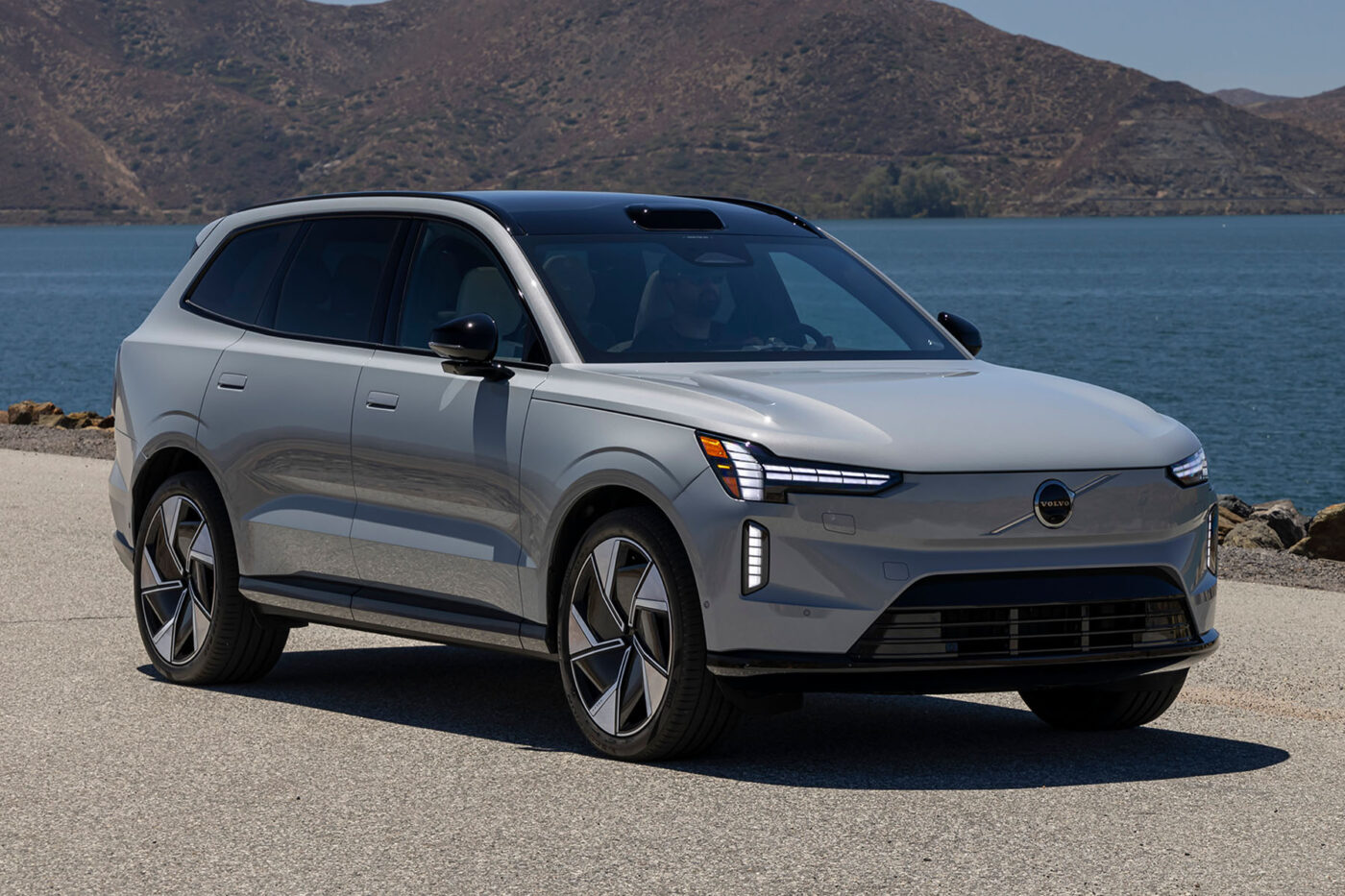
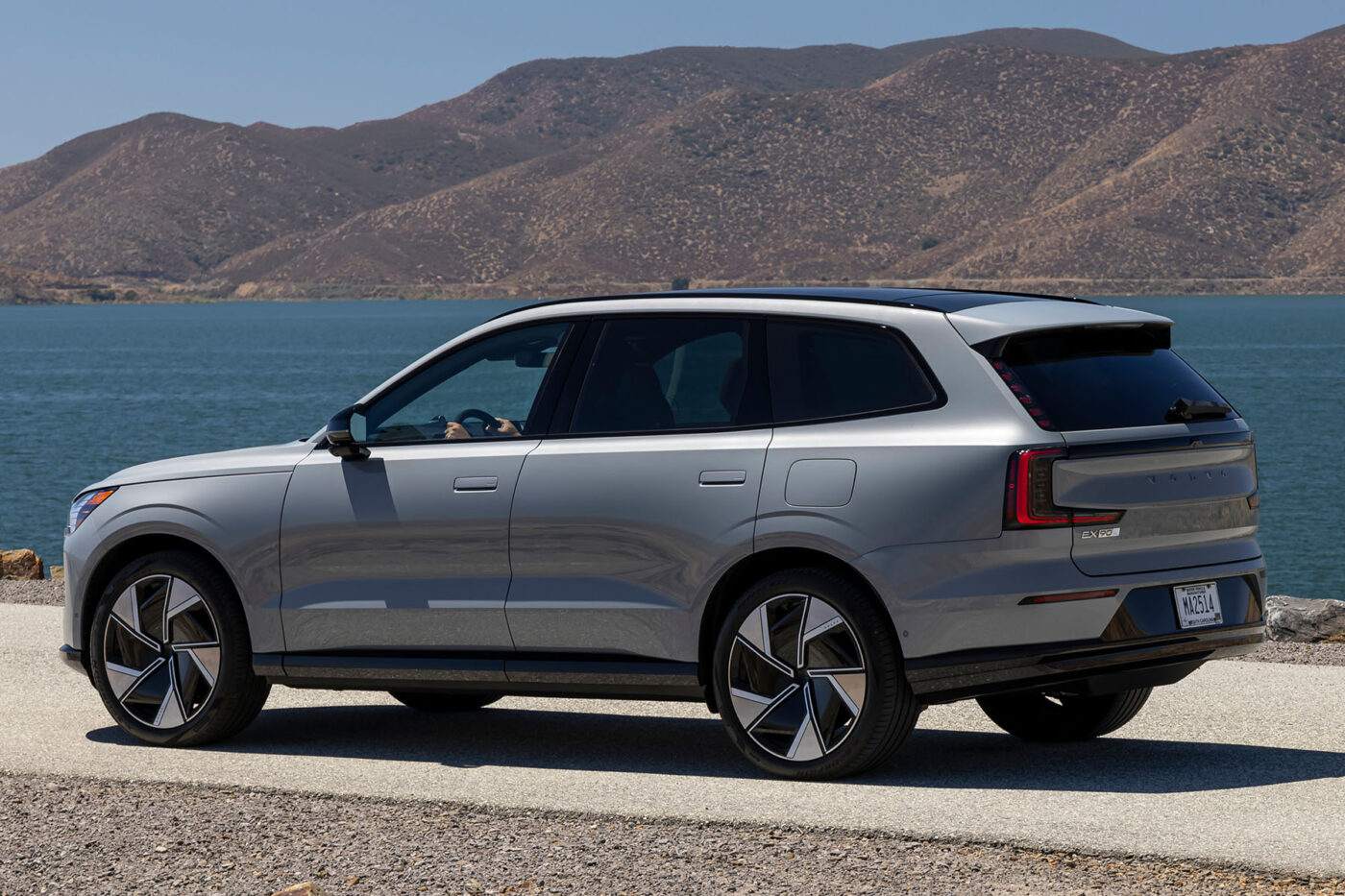
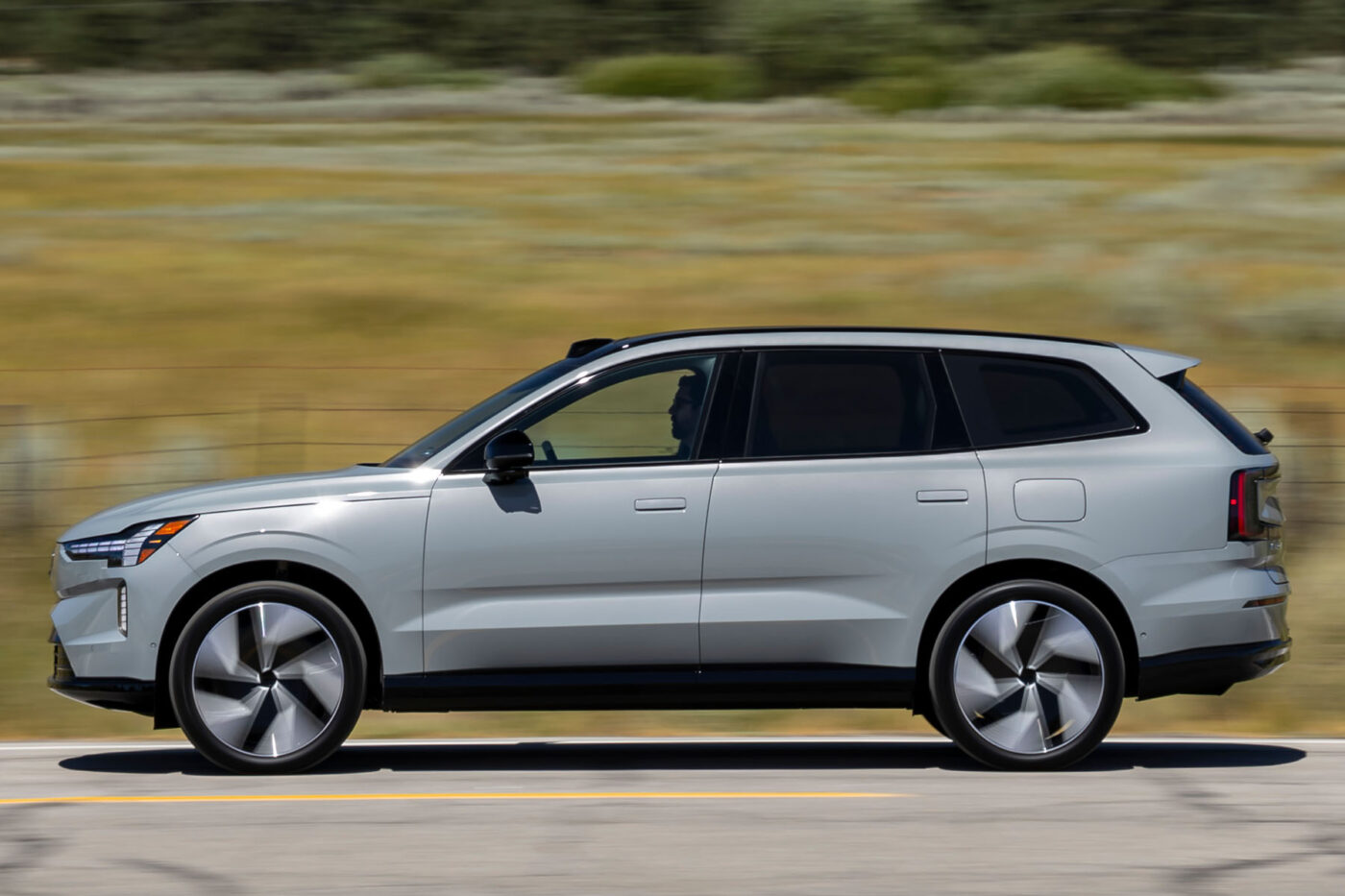
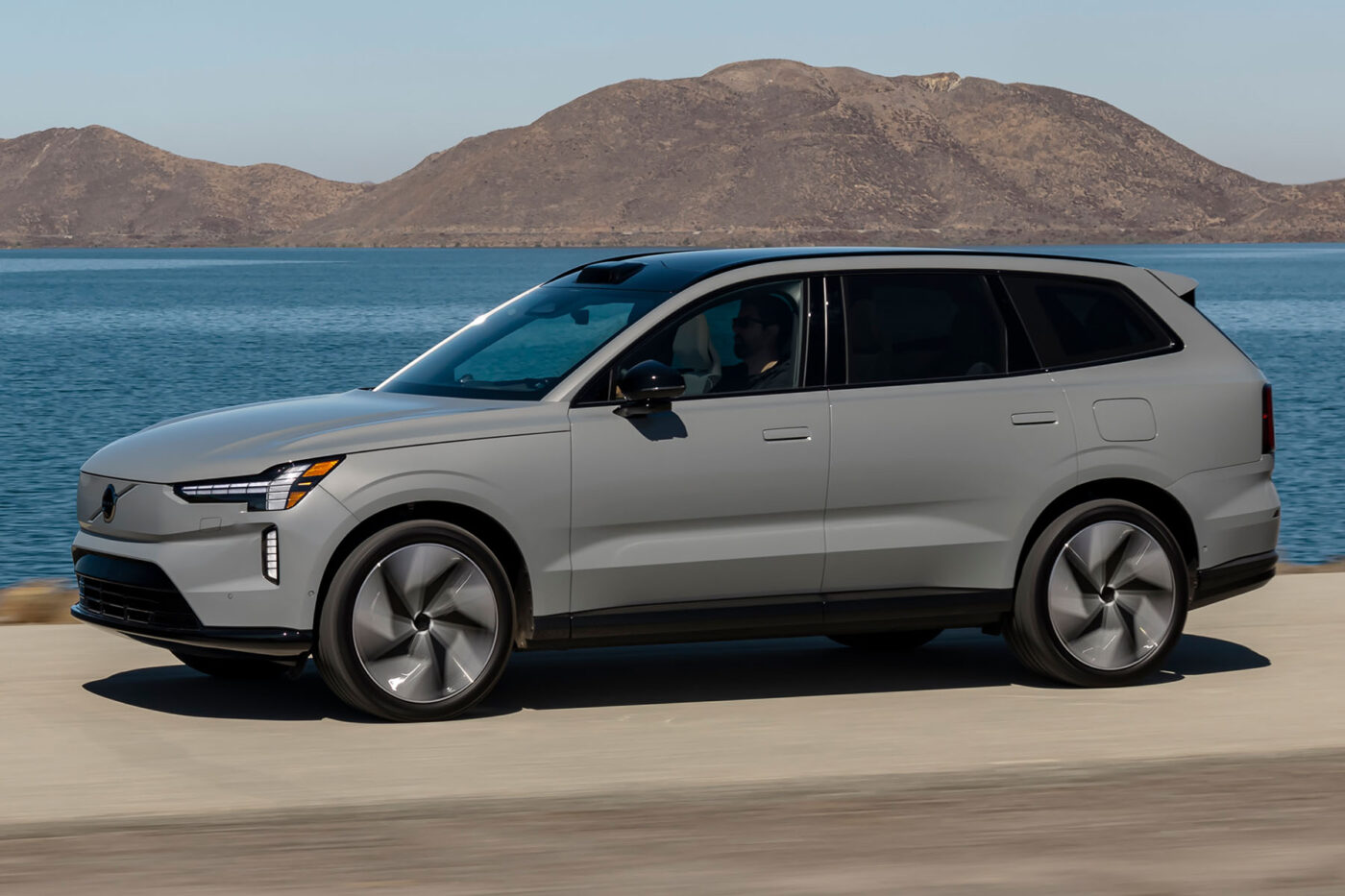
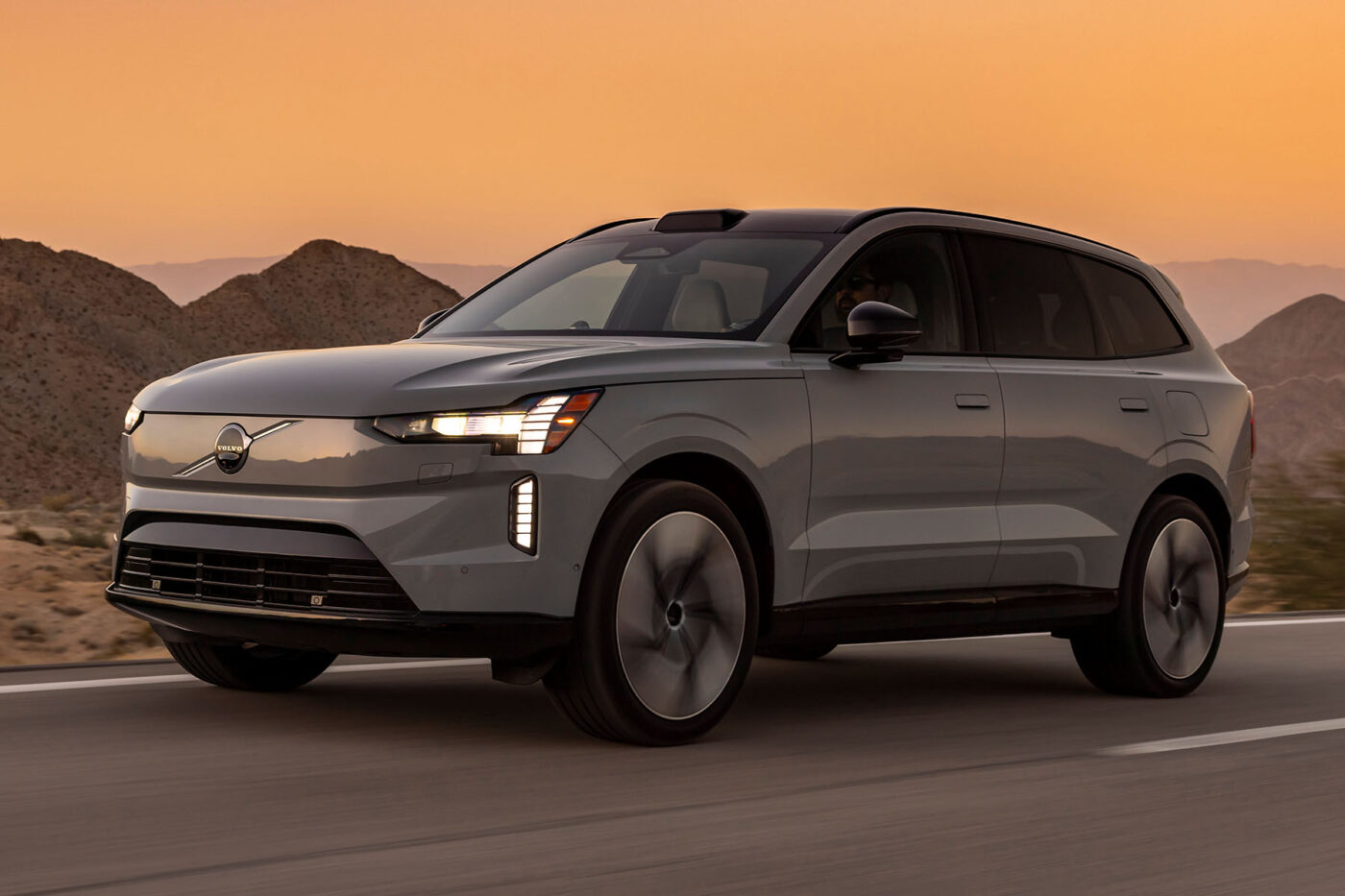
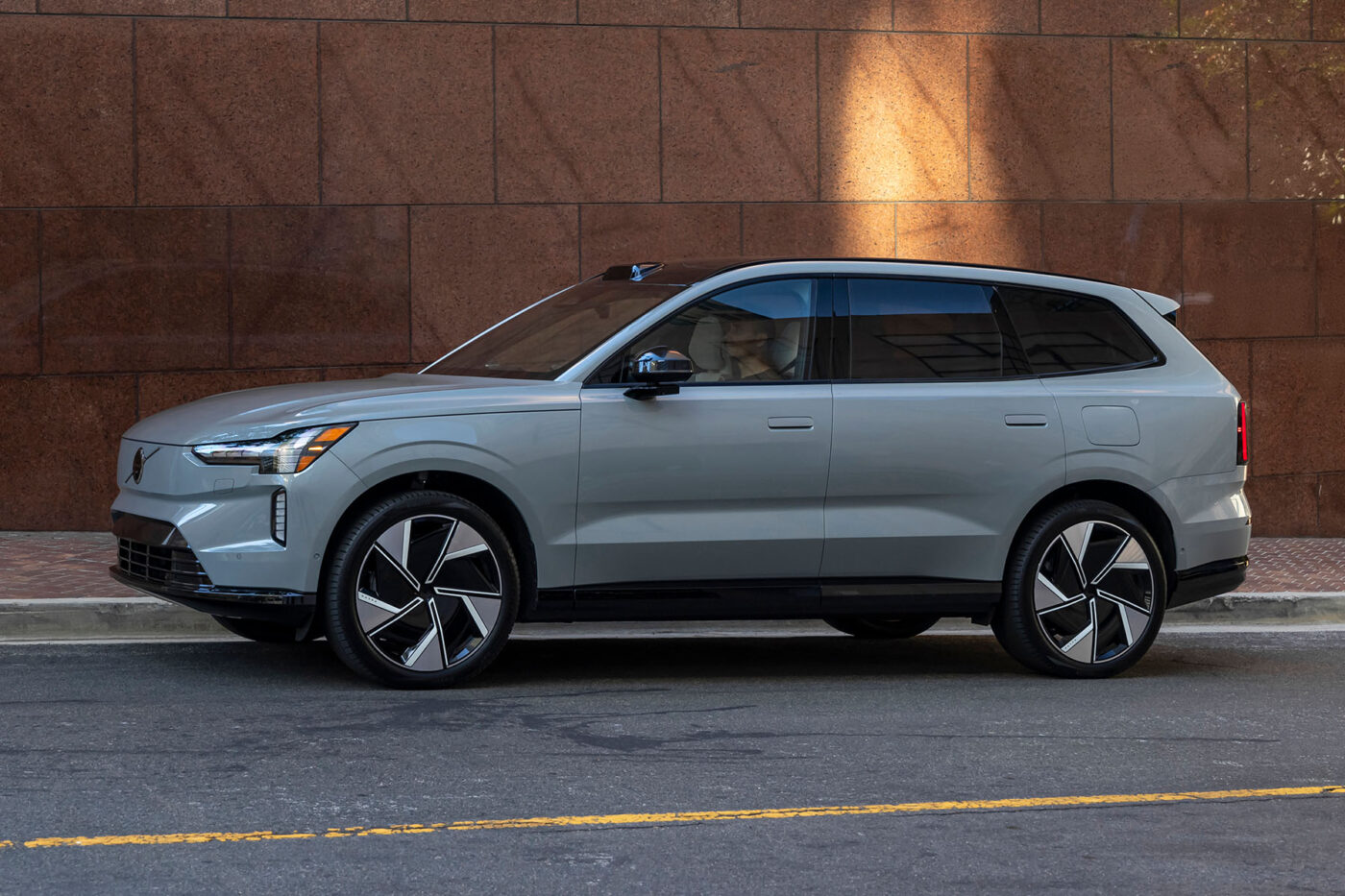
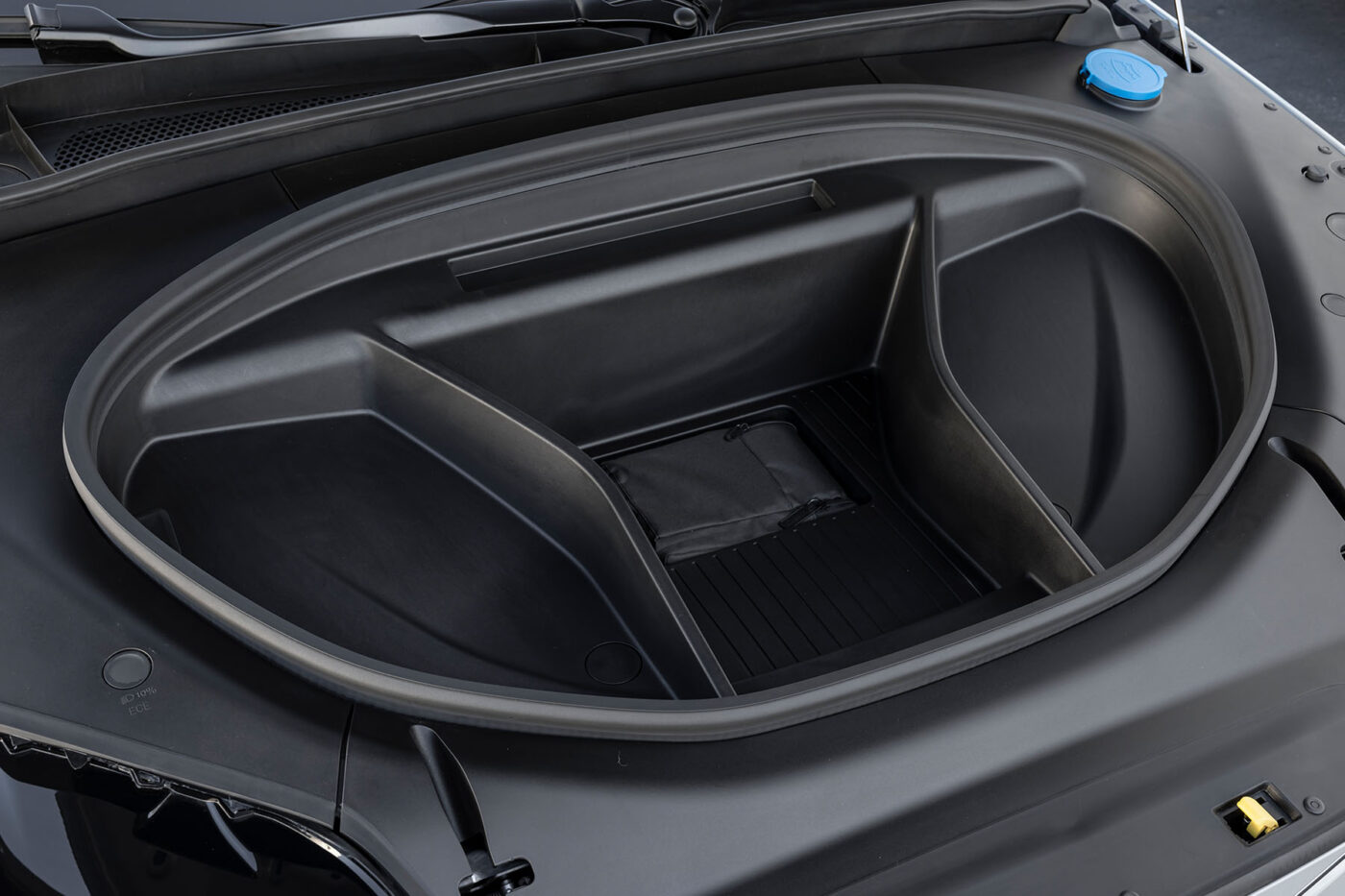
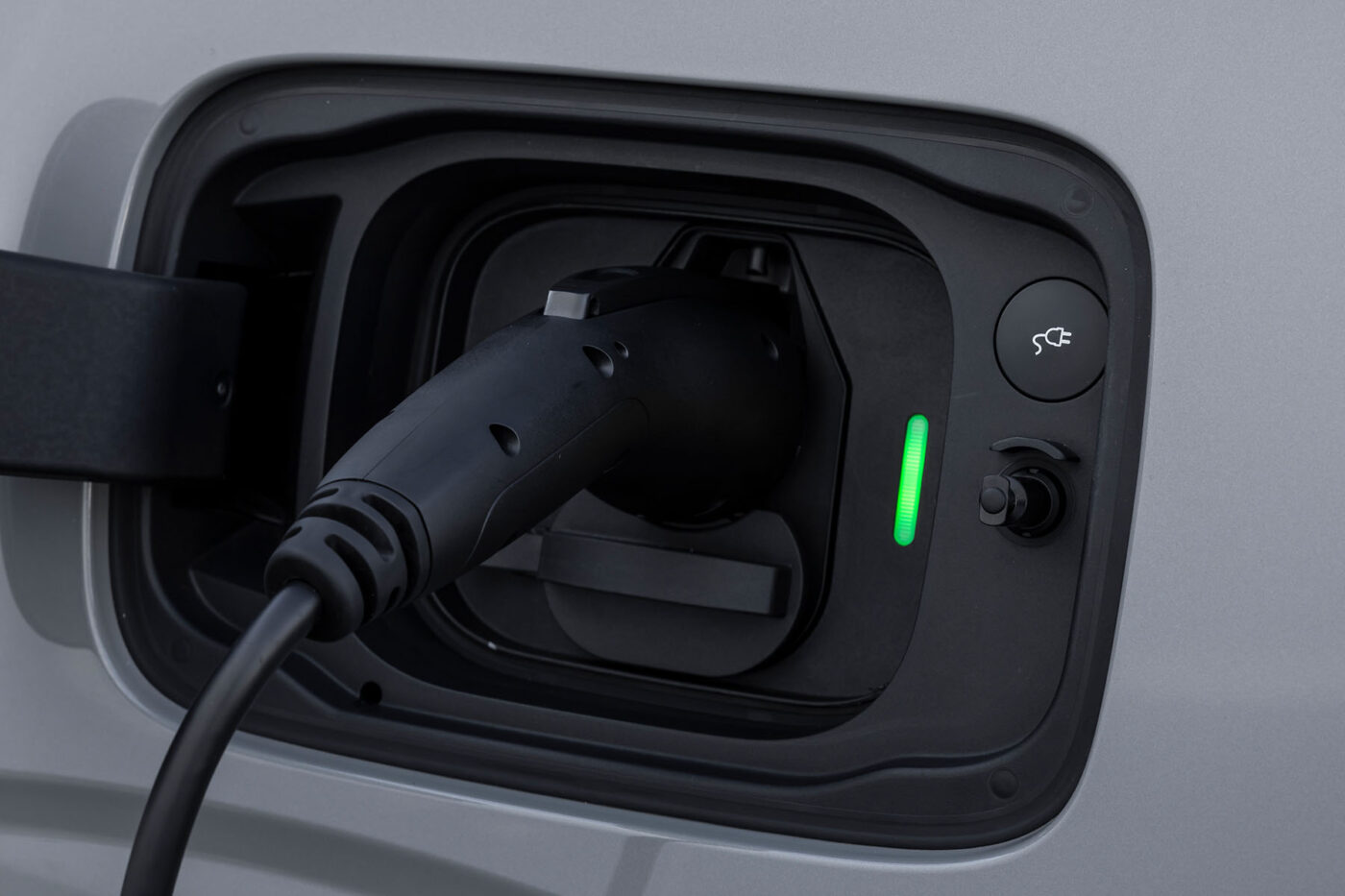
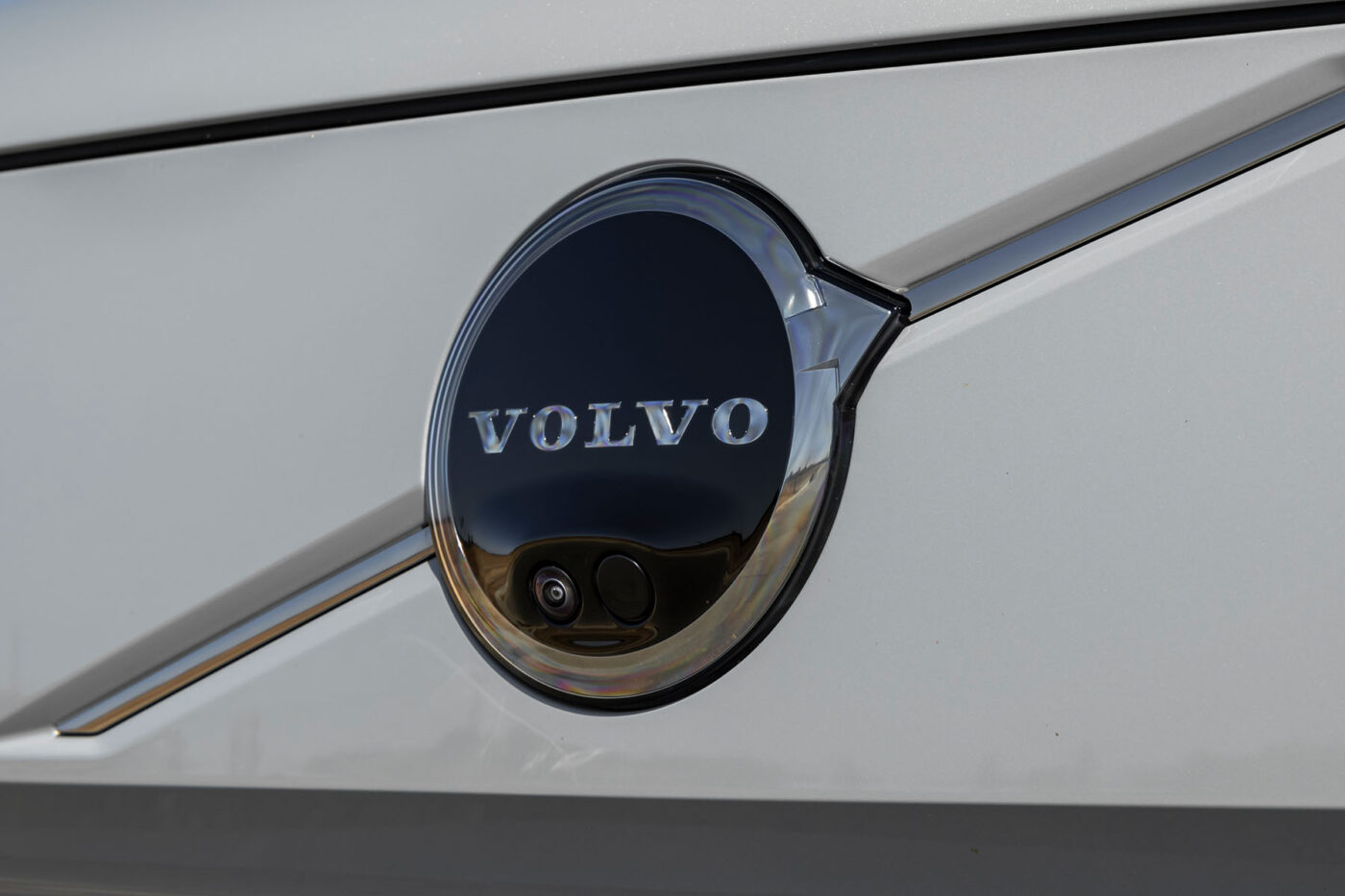
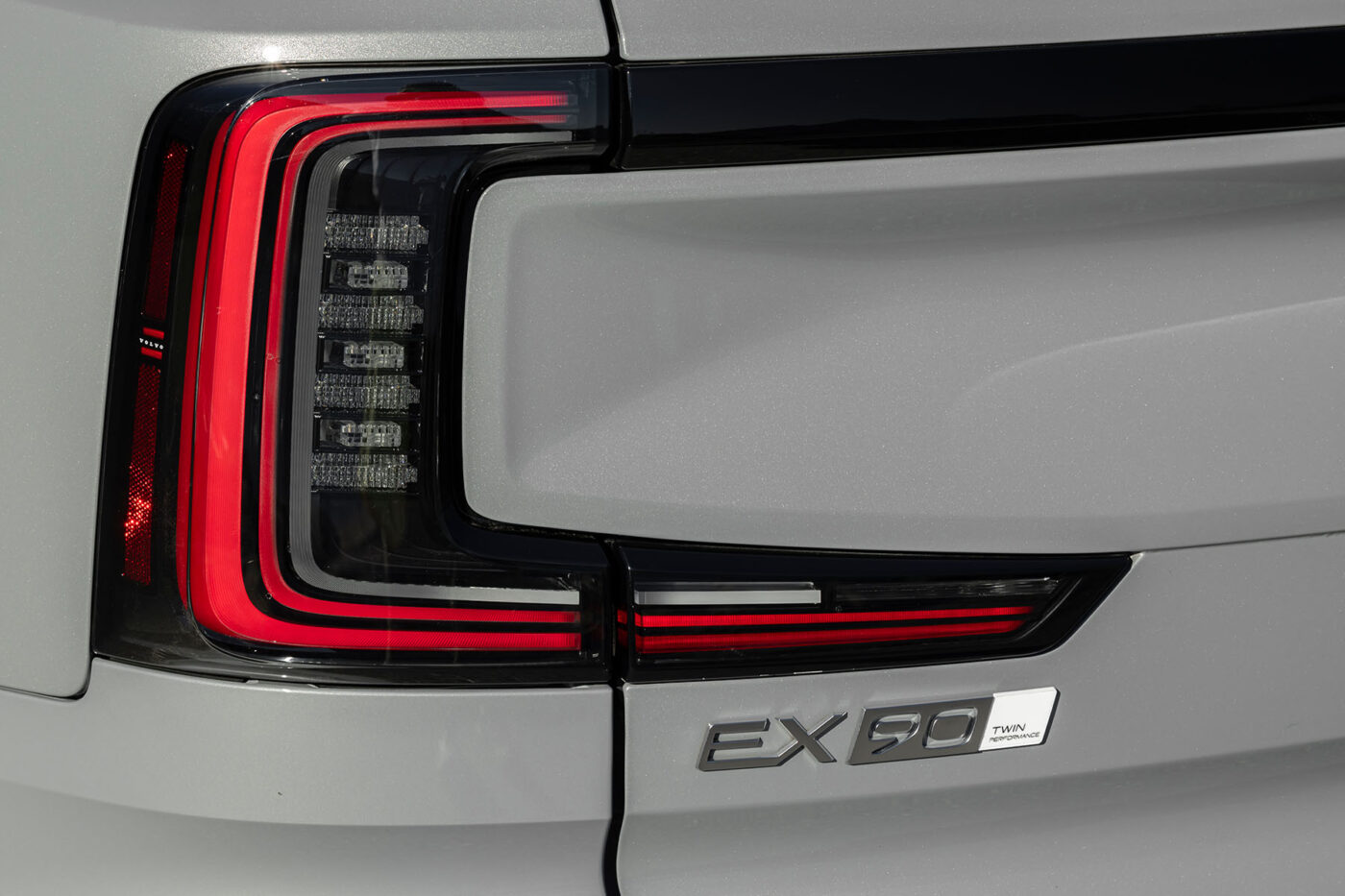
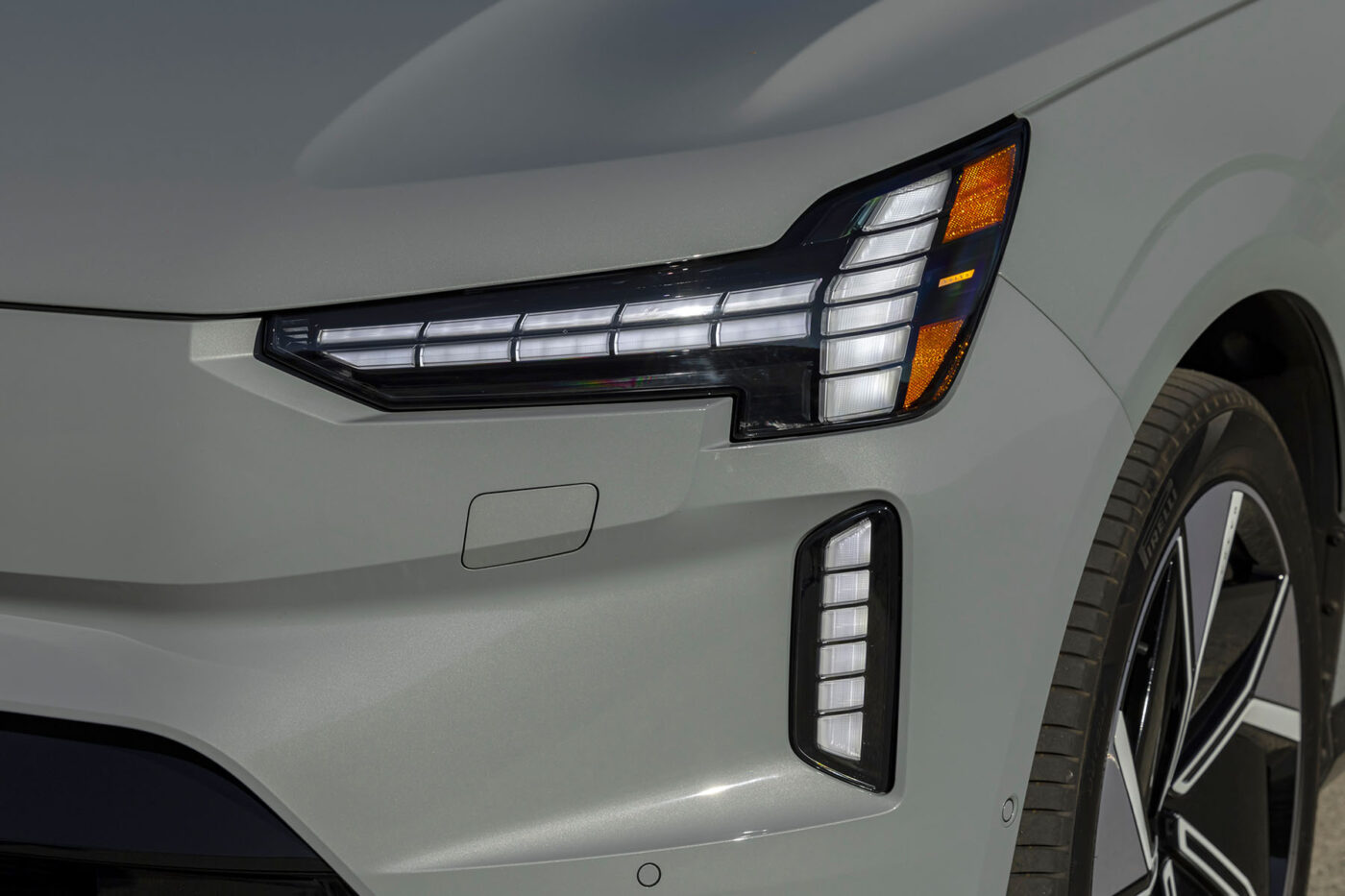
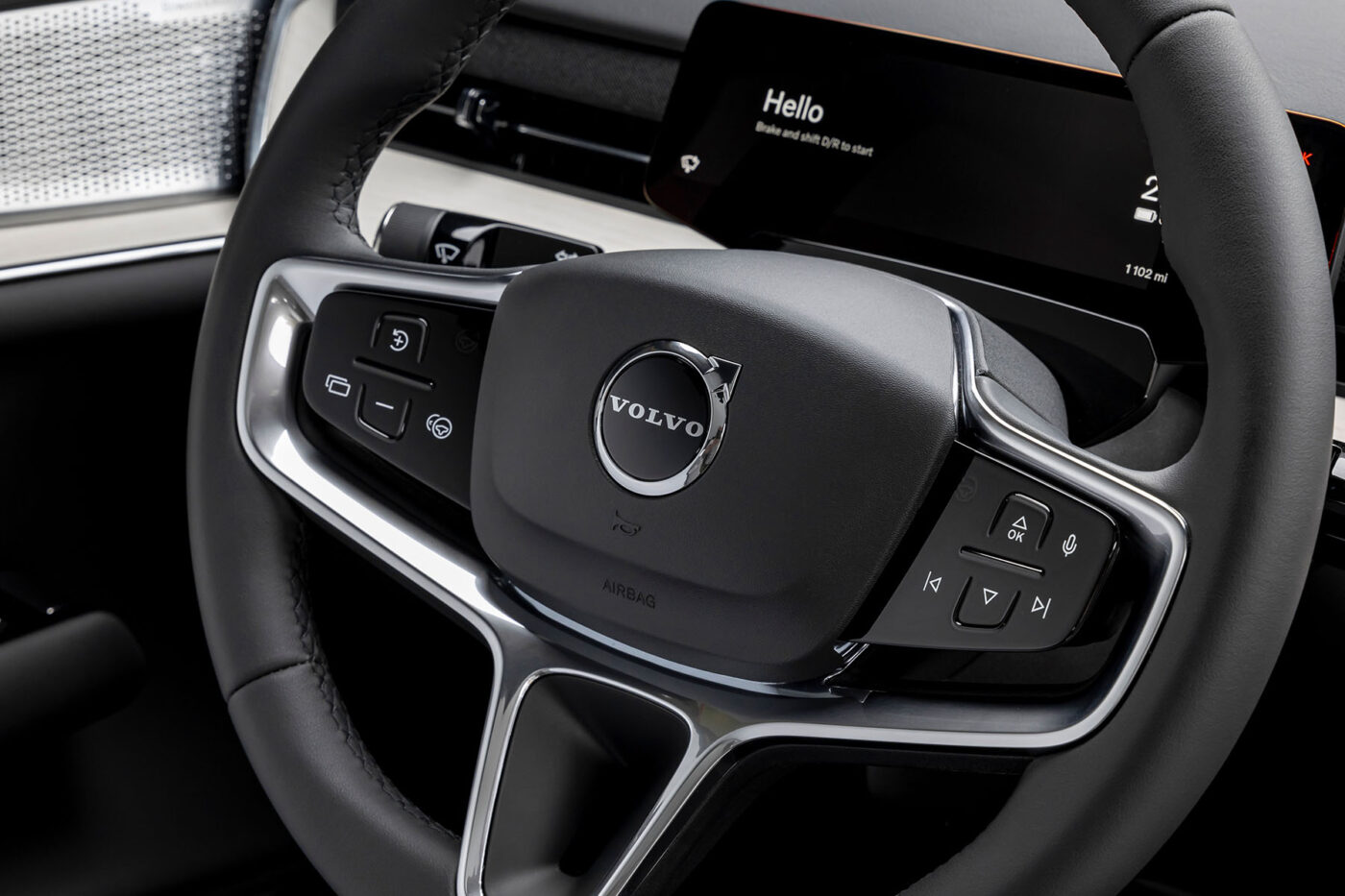
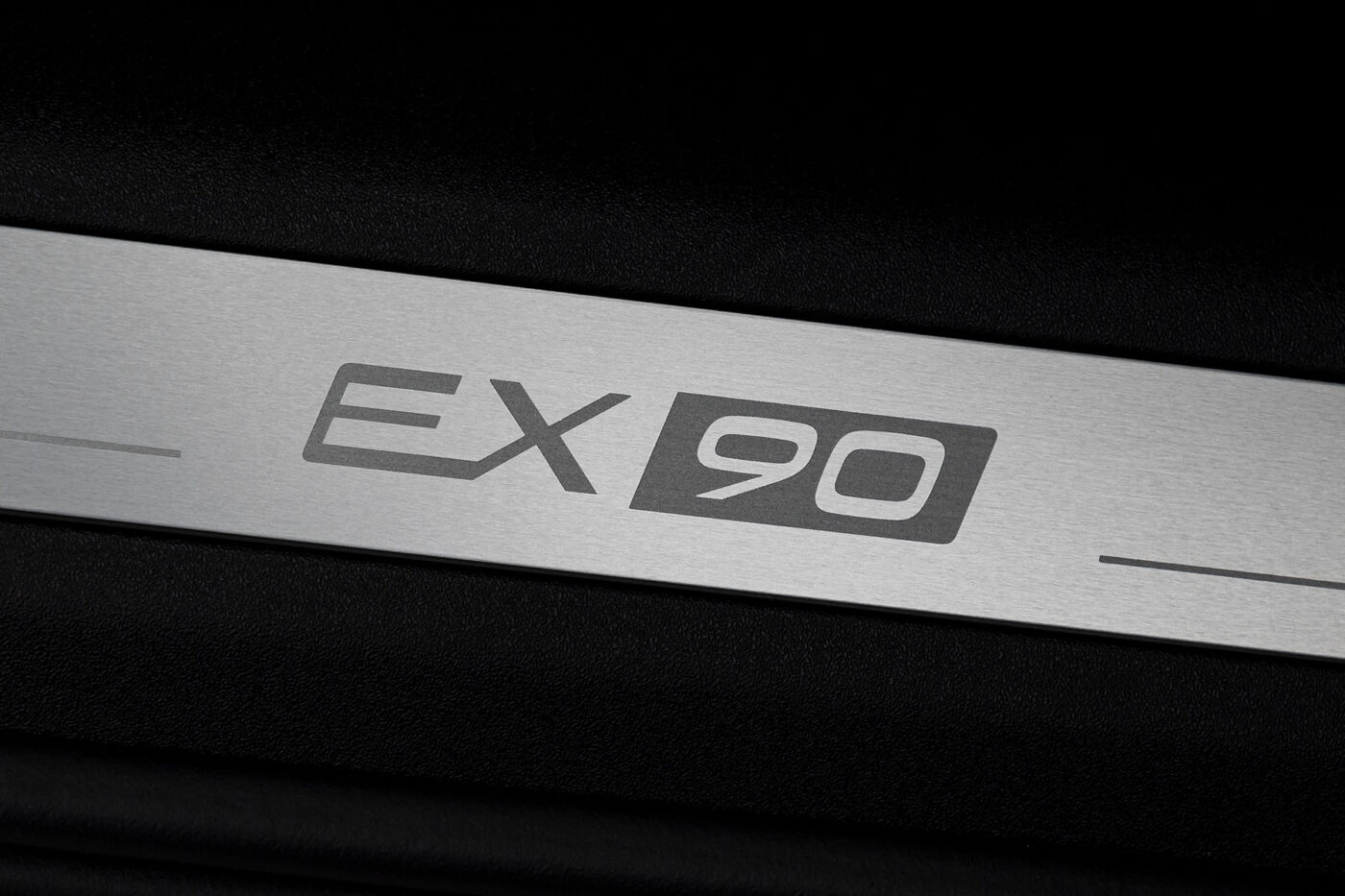
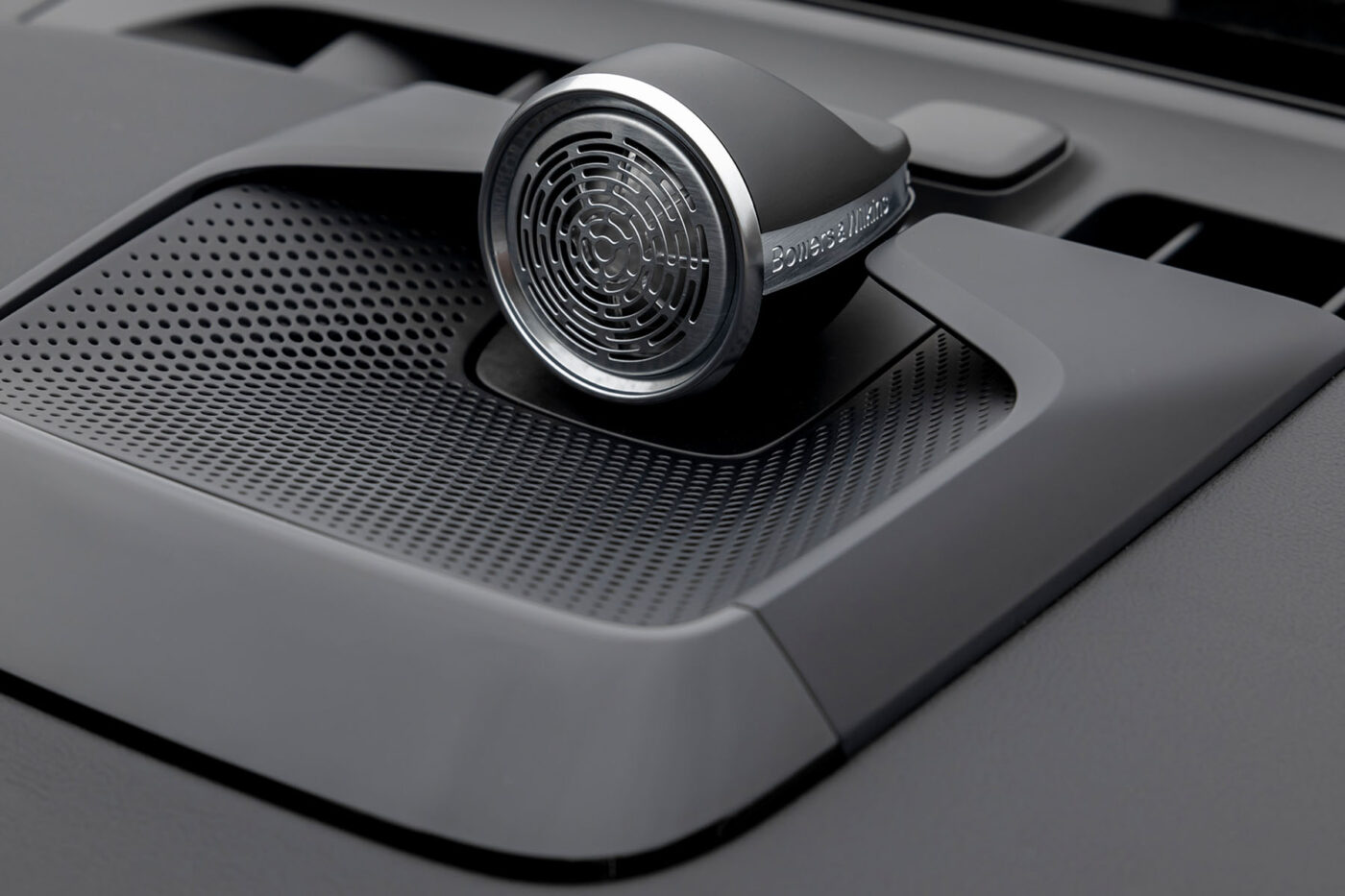
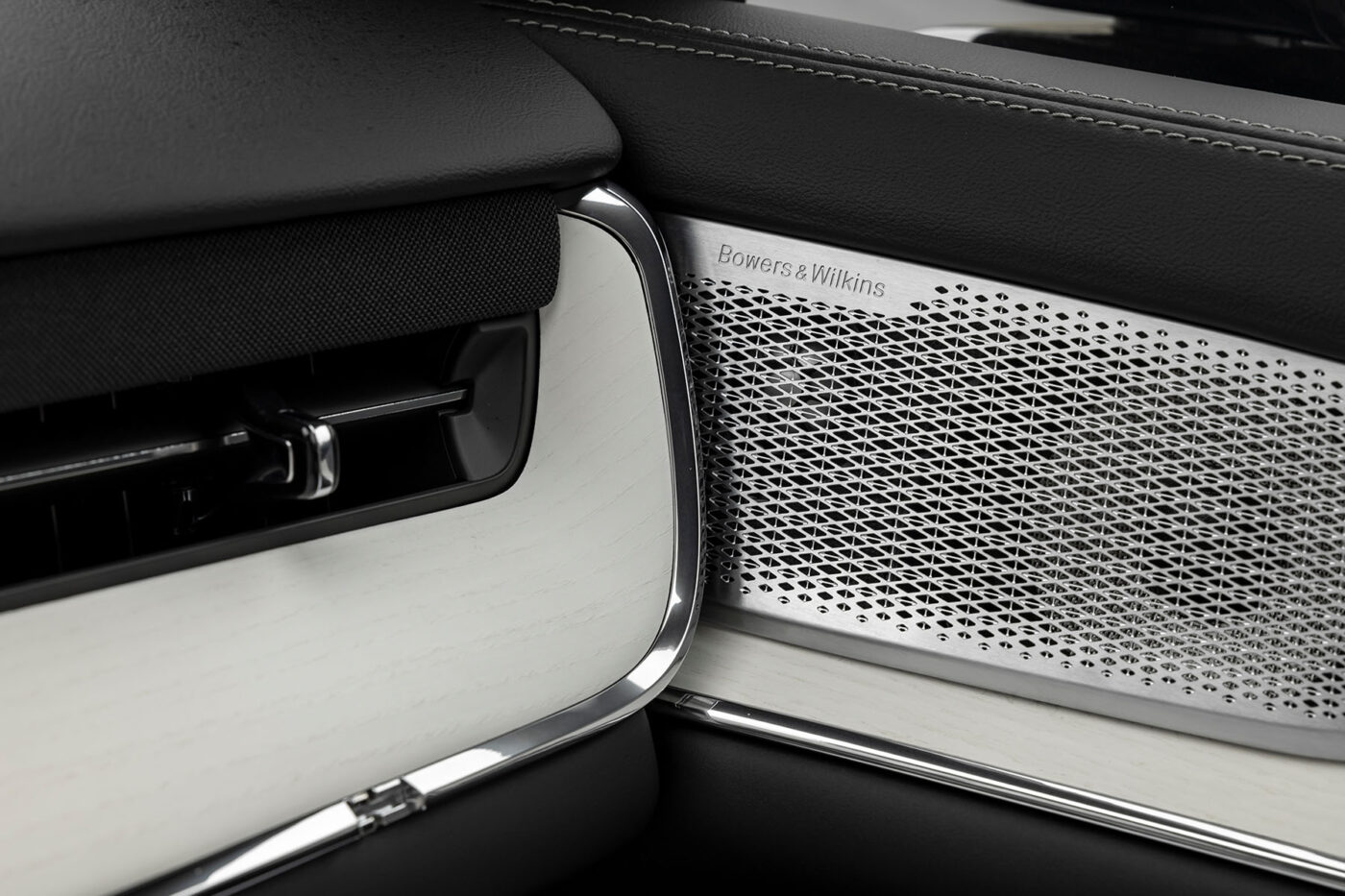
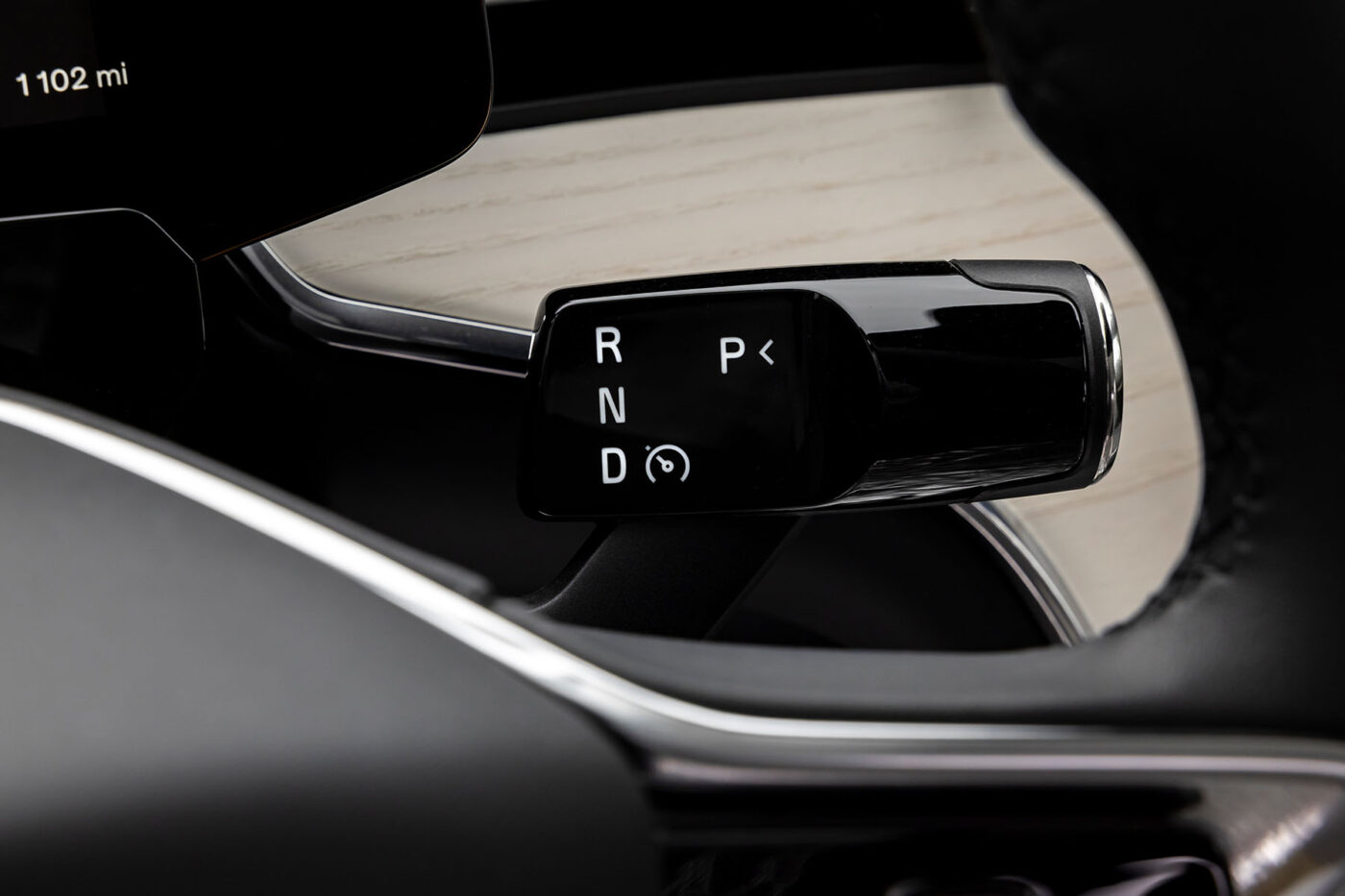
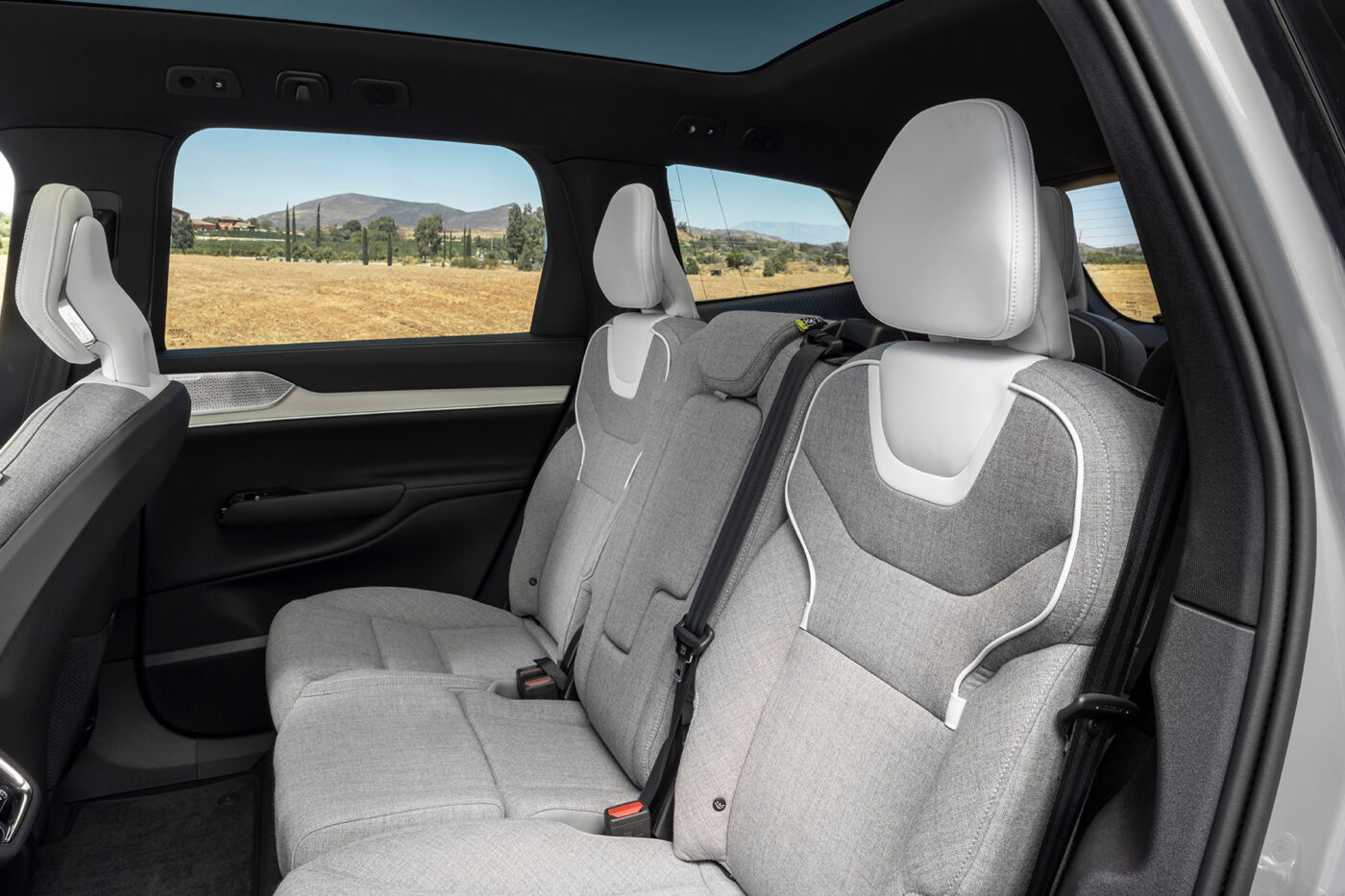
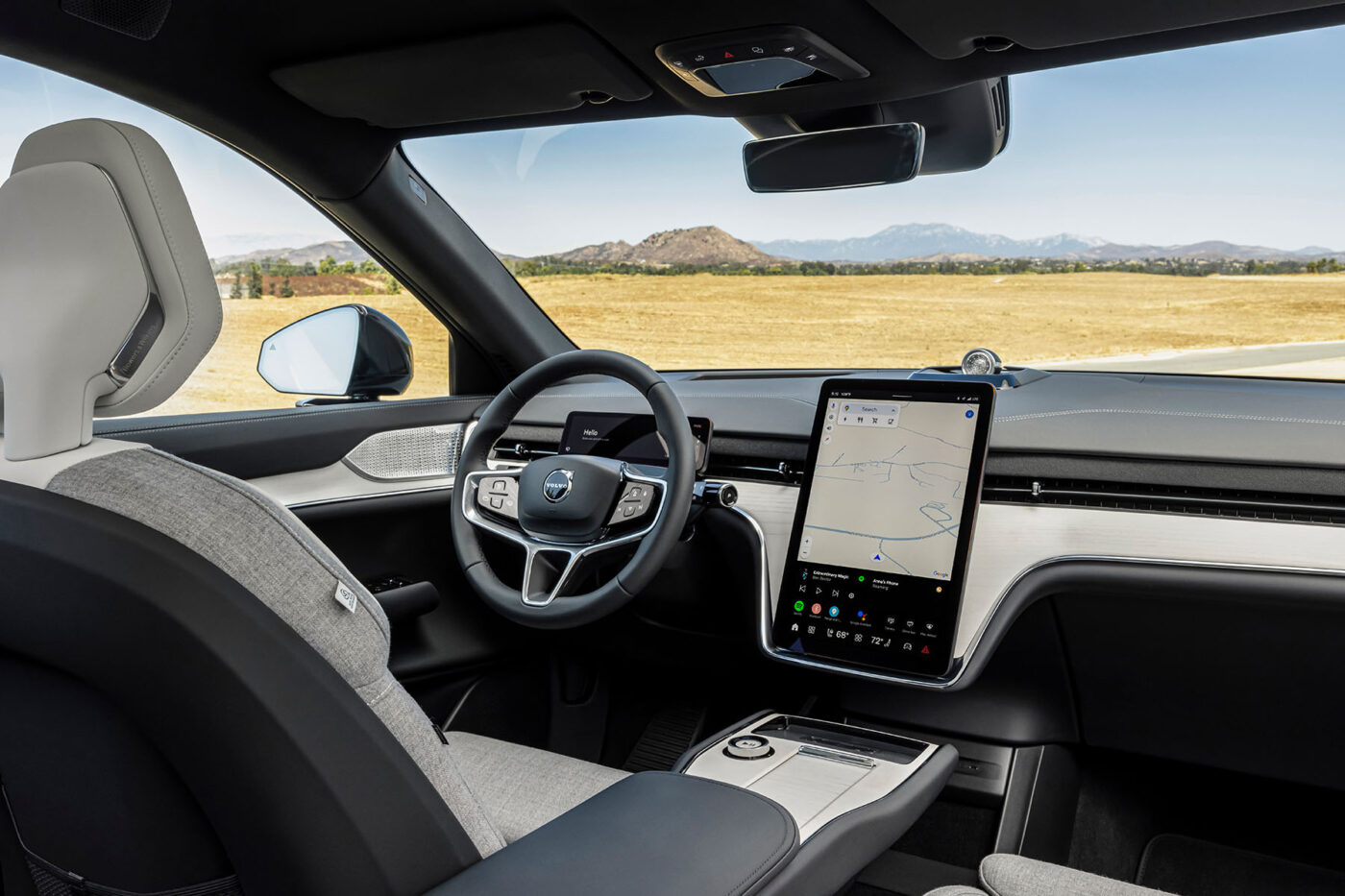
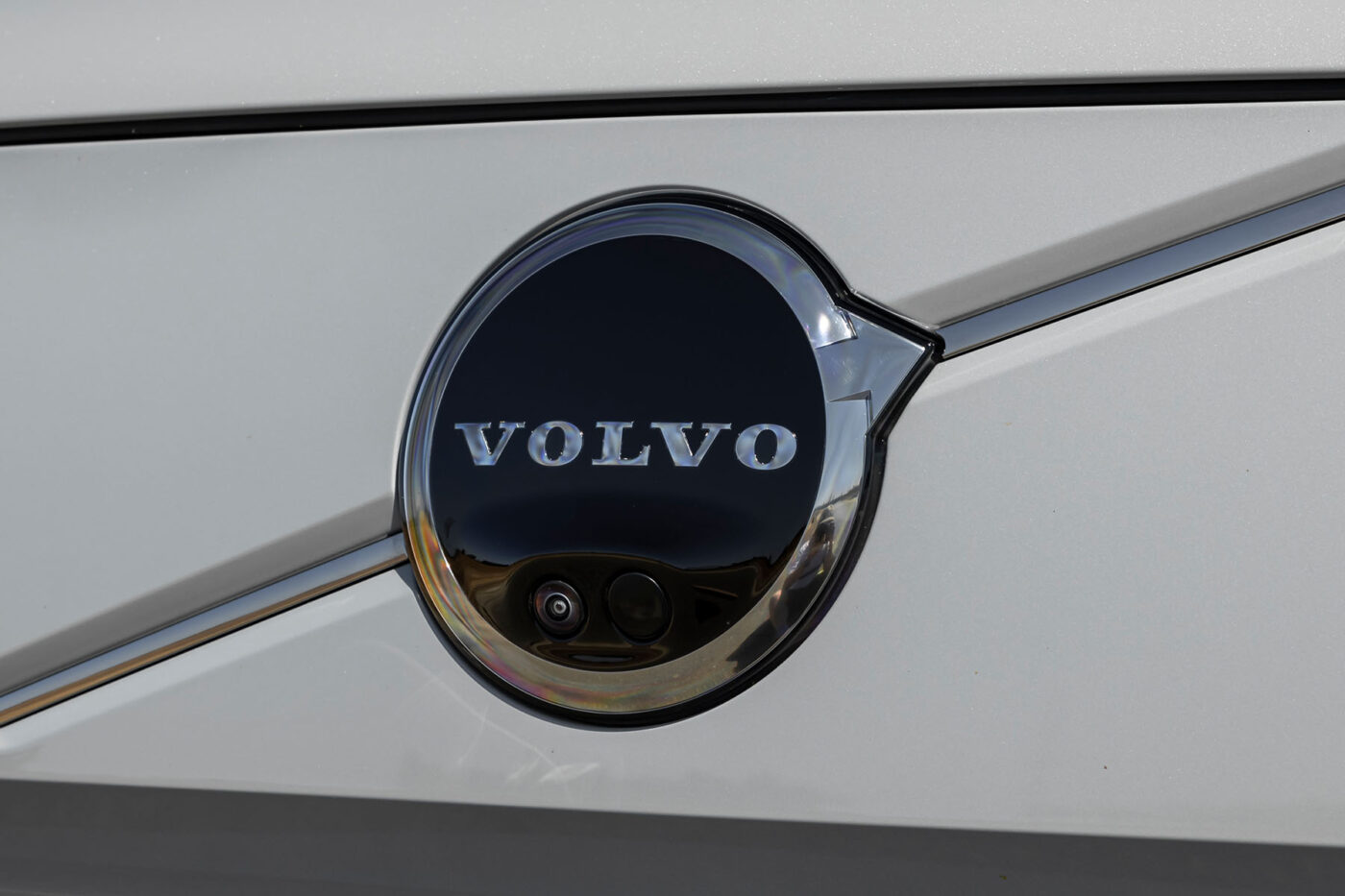
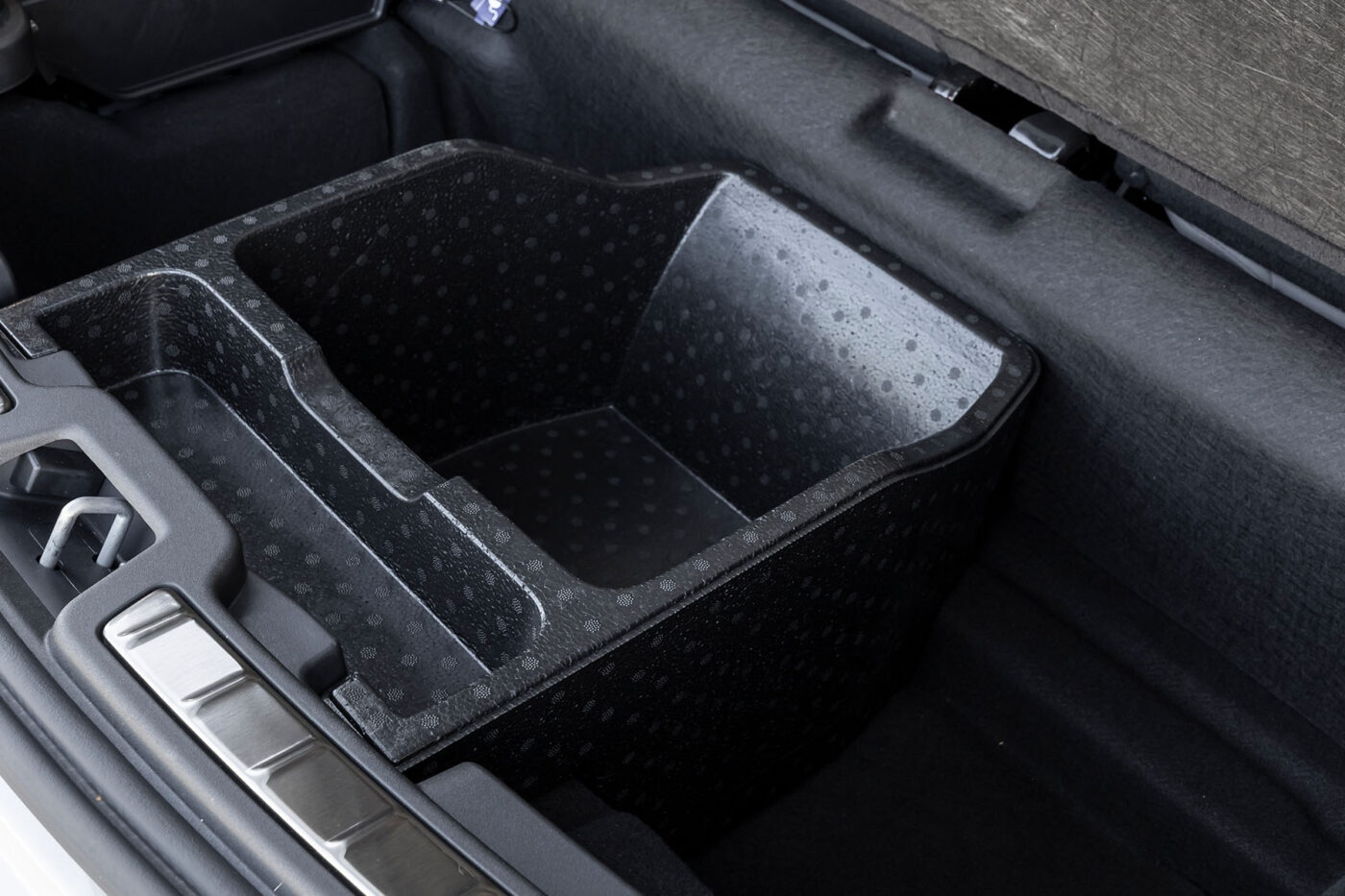
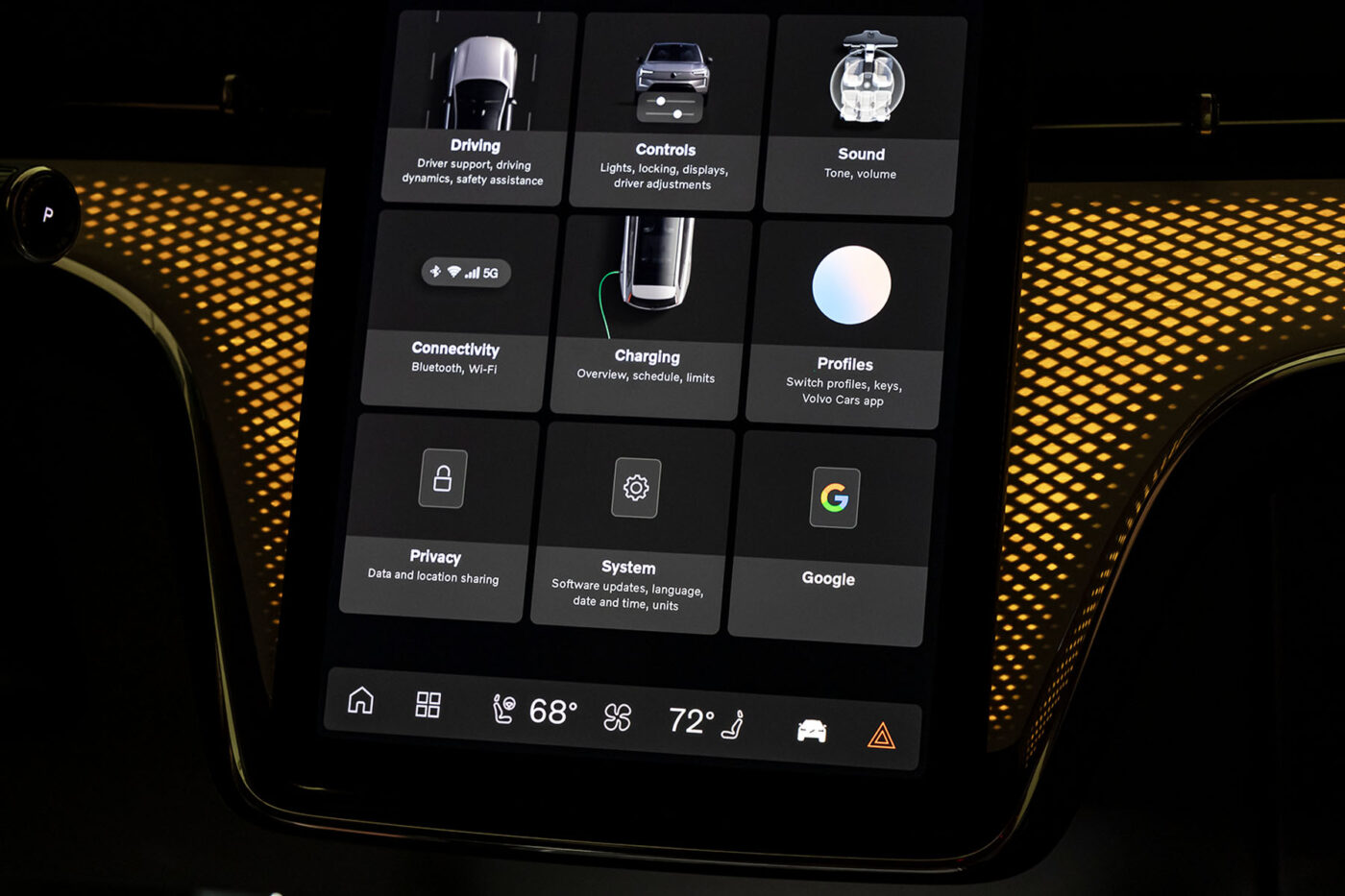
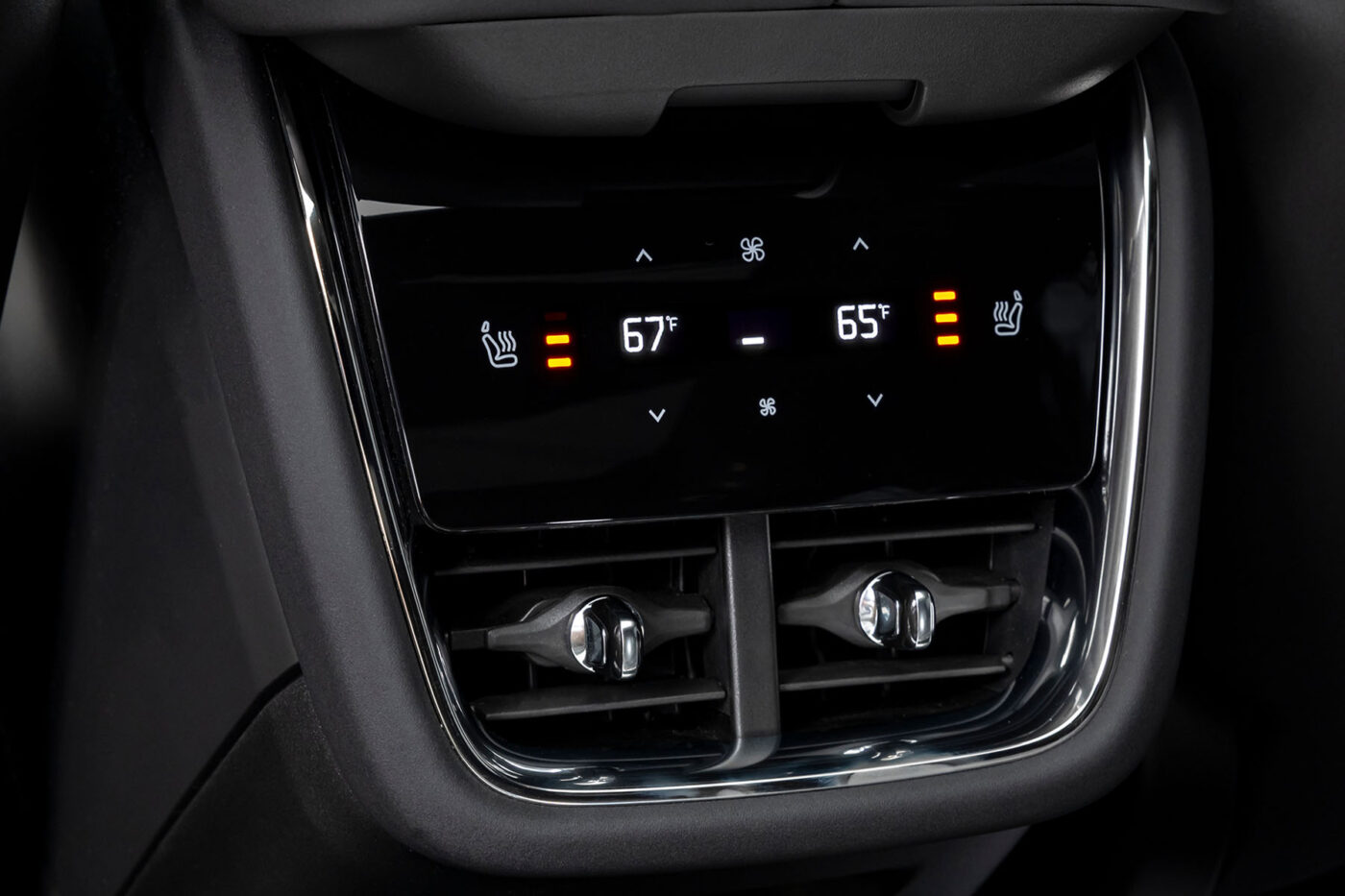
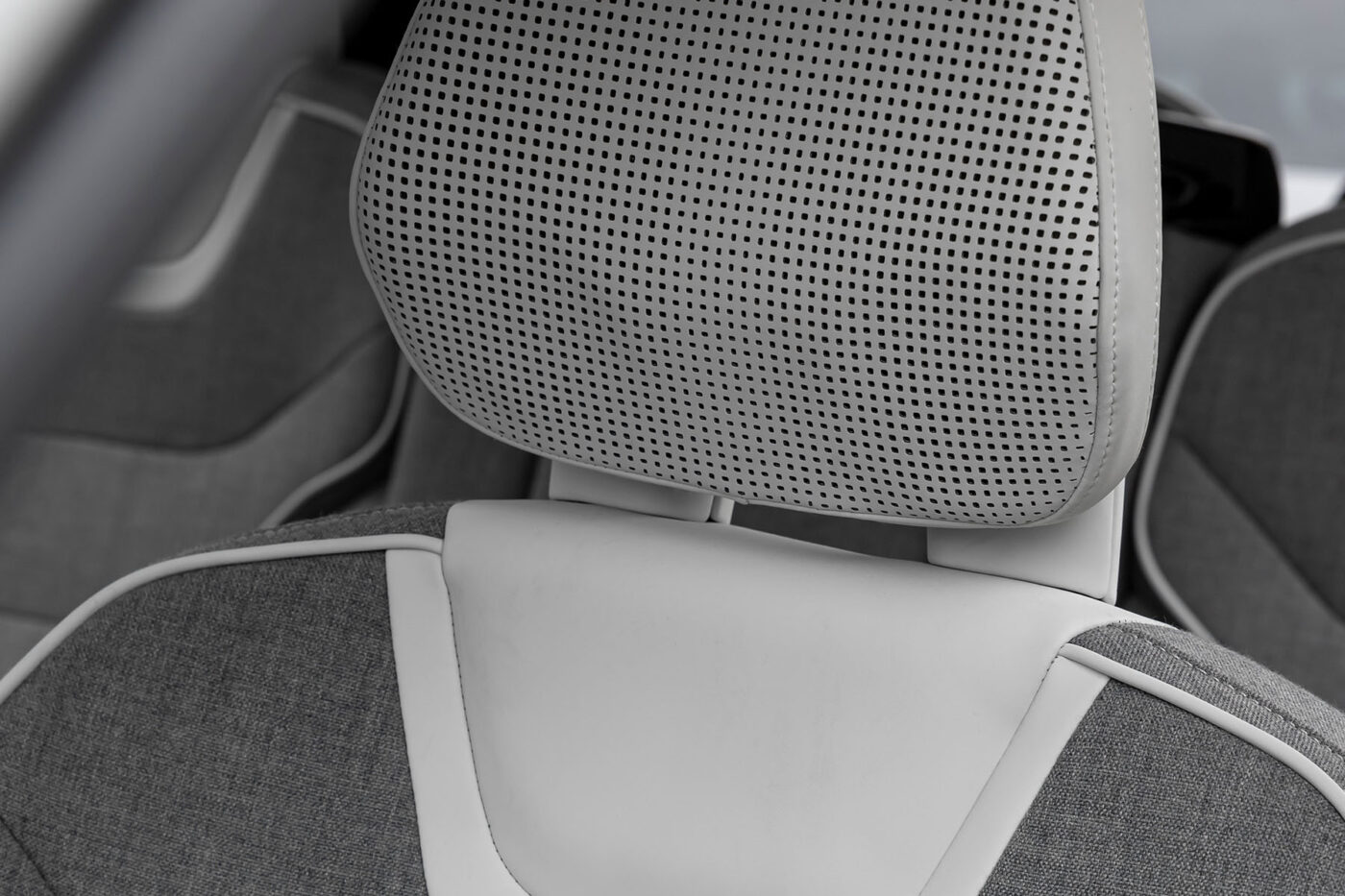
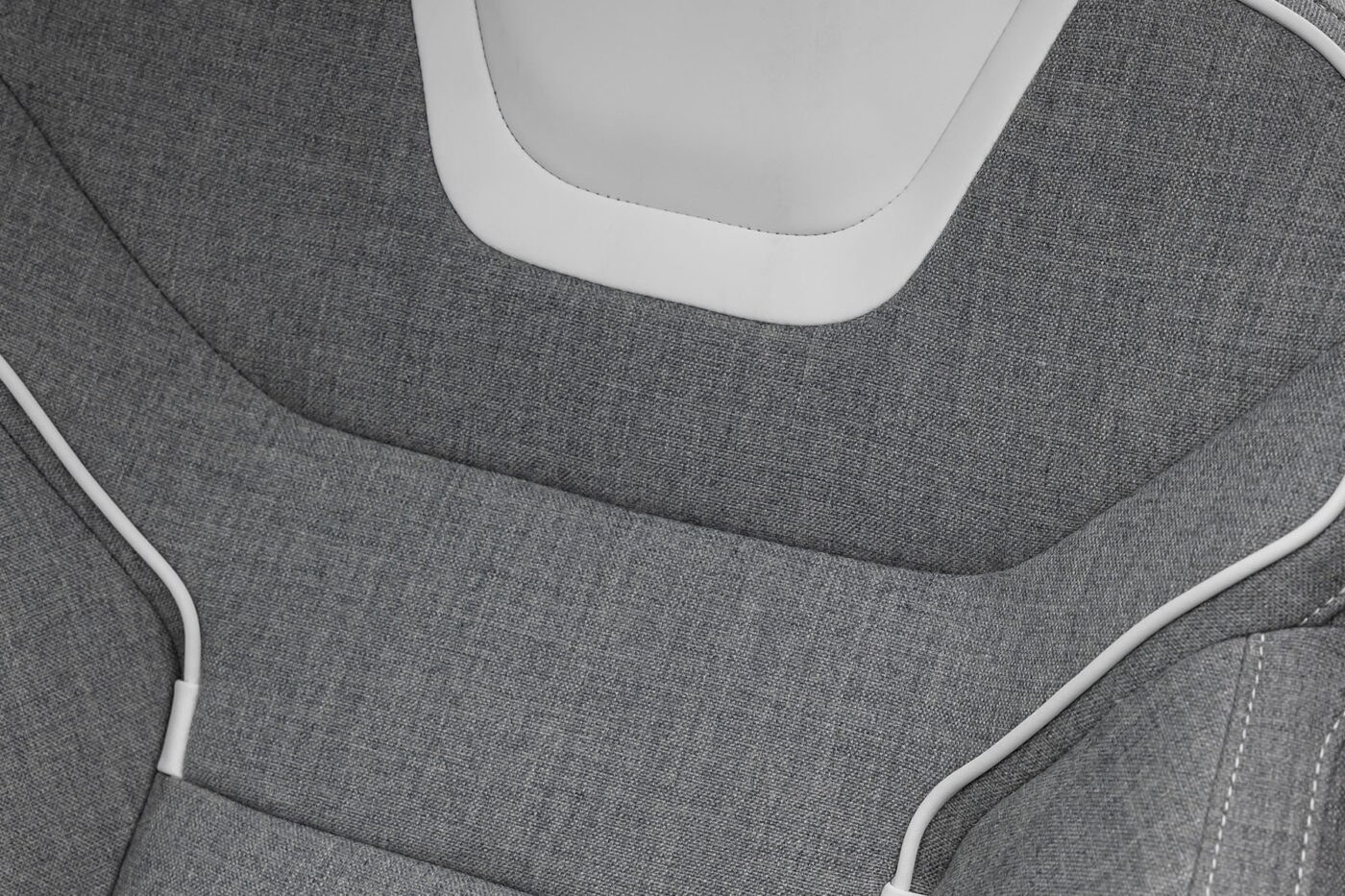
The 910 Newton metres are always present and immediately available; in ‘Performance AWD’ mode, torque vectoring implemented via clutches also improves traction. But even in this sporty drive setting, the power always remains easy to control, as does the recuperation – whether in city traffic at traffic lights, on the motorway or on bends through the canyon.
Volvo has tuned the chassis to be just as refined as the drive. The new two-chamber air suspension is comfortable, but not too soft. Even with the 22-inch tyres on the test car, most bumps are absorbed cleanly, with only a few short bumps making their way into the interior – it would be interesting to see how the EX90 behaves on smaller wheels in Europe. The interior noise comfort is also outstanding. But here, too, only a European test will clarify how this can be transferred to the German motorway – in the US we barely exceeded 110 kph.
The same applies to energy consumption: the 22 kWh/100 km on the onboard computer should still be treated with caution. The dead-straight US roads with few traffic lights do not necessarily reflect the traffic scenarios in Central Europe. Nevertheless, this consumption means a real-world range of just over 480 kilometres; even with slightly higher consumption, 400 kilometres between two charging stops should be easily possible.
In addition to the ‘Performance AWD’ mode, you can also choose between ‘Soft’ and ‘Firm’ for the air suspension and steering. Volvo has hidden these settings so deep in the menu structure that it would actually be a point of criticism. In practice, however, hardly any Volvo customers will use this. For one thing, the differences between ‘Soft’ and ‘Firm’ are so small in both cases that they would hardly be noticeable without a conscious comparison test. Secondly, the ‘Soft’ setting is simply extremely suitable and harmonious – ‘Firm’ gives only slightly more feedback from the road, this setting is not really sportier. And even in ‘Soft’ the road holding is good, the car doesn’t wobble around the bends.
We cannot yet provide any experience of the charging performance after this first drive – the range is too high at over 450 kilometres in real terms and the time was too short. Even at the end of our test drives, there was still over 40 per cent of charge left. However, the 250 kW DC charging power from the data sheet is only possible at a few charging stations: the EX90 is based on a 400-volt architecture, and with the usual 500 amps, charging would stop at 200 kW. However, Volvo goes beyond these 500 amps: at some 400 kW charging stations (such as those installed in Germany), higher currents are possible for a short time, so the EX90 can reach its 250 kW with the appropriate charge level. However, the advantage over the usual 500-amp columns (such as the 300-kW power class) is manageable: with the standard charging processes from ten to 80 per cent, the EX90 only takes two minutes at 250 kW and needs 30 instead of 32 minutes (with 200 kW at the peak).
400 volts remains – for now
Incidentally, Volvo has not confirmed the switch to an 800-volt system in the middle of the model cycle, but has not ruled it out either. The carmaker points out that changing the system voltage would mean a much greater intervention than the wiring of the cells in the battery – charging hardware, motors, inverters, all would be affected. BMW is about to launch an 800-volt architecture with the Neue Klasse, while Mercedes has not made the switch to 800 volts with the latest EQS facelift, but it is probably not completely off the table either. Volvo only said in California that they believe in their own product.
An onboard charger with 11 kW is installed for AC charging; a complete charging process takes eleven hours. The announced bidirectional charging function is not available at launch, but will follow in 2025 via an over-the-air update. In view of the already slowing software problems, Volvo has put this function on the back burner, especially as it cannot be used quickly by many customers anyway. That is because, in addition to the right electric car, the right hardware is also required on the infrastructure side. And: in many countries, a legal framework is still lacking.
There was little sign of the software problems during the first drive – Volvo did not want to comment on which areas of the software still needed work. If it was a matter of the drive, the chassis or the driving assistants, the delay was worth it – there were no anomalies here. There were no major challenges with the new Android-based infotainment system, only some settings (such as for the chassis) were somewhat hidden without practice. The system can also be used to plan routes, find charging stations and filter them according to certain criteria. It was only noticeable that the map view zoomed out a few times for a few seconds when route guidance was active, before switching back to a usable view.
Lidar initially only collects data for now
As Volvo sees safety as one of its brand cores, the driving assistants are also carefully tuned. Although the EX90 has a lidar sensor above the windscreen (mocked by some as a ‘taxi sign’ because of its shape), Volvo remains in the field of assisted driving – there is no talk of autonomous driving. The laser sensor is currently primarily used to collect data and improve the interaction between the camera and radar. A radar sensor is good at measuring distances, but is sometimes confused by radar echoes. The camera helps to filter out the echoes and only identify the actual object – but the camera is severely limited in poor visibility or strong backlighting. The lidar can potentially do both. Above all, it can help to speed up the system’s decisions – if the camera-radar combination needs a second measurement a few metres away to be sufficiently certain, the lidar can be used as a third system to verify an object directly.
In other words, the hardware basics are there. However, Volvo has stated that it will not introduce a system that it is not 100 per cent sure of – hence the data collection first.
A brief look at the interior: the seven-seater was available for the test, although the EX90 is also available as a five- and six-seater in Europe. The space is appropriate for the size of the vehicle, but does not set any new standards. Despite the electric platform, Volvo has opted for classic proportions with a fairly long bonnet (including a frunk with 49 litres underneath). In the first and second rows of seats, two adults of 1.90 metres can sit comfortably one behind the other. The third row is more cramped, but short distances are also possible for adults.
| EX90 Single Motor | EX90 Twin Motor | EX90 Twin Motor Performance | |
|---|---|---|---|
| Drive | RWD | AWD | AWD |
| Performance | 205 kW | 300 kW | 380 kW |
| Torque | 490 Nm | 770 Nm | 910 Nm |
| Acceleration | 8.4 s | 5.9 s | 4.9 s |
| Top speed | 180 kph | 180 kph | 180 kph |
| WLTP range | 580 km | 614 km | 614 km |
| Battery | 101 kWh | 107 kWh | 107 kWh |
| Charging capacity DC | 235 kW | 250 kW | 250 kW |
| Charging time DC 10-80% | 29 min | 30 min | 30 min |
| Price (in Germany) | 83,700 Euro | 91,700 Euro | 96,800 Euro |
If all seven seats are used, only 324 litres of storage space remain in the rear; the same applies to the six-seater. Behind the second row, there are 669 litres, although there is no closed loading area – there are a few cavities around the headrests of the third row through which smaller objects can fall. And if you want to transport a dog in the boot, you should also cover these holes with a boot mat – or use a suitable dog box. If the seat backrests of the second row are also folded down, up to 1,955 litres fit into the EX90 – in the six-seater with the two comfortable individual seats in the second row, it is ‘only’ 1,867 litres. Regardless of the number of seats, the roof and towing capacity is 100 kg and 2,200 kg braked for the all-wheel drive models and 1,200 kg for the rear-wheel drive models.
The prices: The XC90 was not a cheap car either, and Volvo is building on this with the EX90. The base model with a small battery as a five-seater can be ordered in Germany from 83,700 euros, while the Twin Motor (only as a 6- or 7-seater) costs at least 91,700 euros. The performance model we drove starts at 96,800 euros in the Core configuration and can even be ordered as an ‘Ultra’ for 107,400 euros base price. With a little extra equipment, this quickly adds up to 120,000 euros or more.
Conclusion
So has the new electric edition of the Volvo flagship been a success? After the first few kilometres in the car, my personal answer would be ‘yes, but.’ Yes, the EX90 has become a good Volvo and will certainly find its friends among the brand’s customers – it has a high-quality finish, is comfortable and looks like a modern Volvo. And it has also become a good car beyond that. You have to go into detail to find points of criticism. Even for an extra charge, there is no 22 kW AC charger, so the AC charging time remains correspondingly long, which limits its practical use at public AC charging points with a blocking fee. The head-up display offers only a few display options, with only an arrow display possible for navigation – where others already show large maps or augmented reality elements in the field of vision. The large panoramic glass roof can neither be opened nor darkened. And in our test car with woollen seat covers, a small label indicating the installed airbag kept pricking the arm. Yes, you have to go that far.
I’m not sure whether the EX90 will attract many new customers to Volvo. Technically, it offers too little new in 2024 (or realistically in 2025 in larger numbers) to stand out in the competition of electric SUVs. A high level of driving comfort, good workmanship and 400-volt charging times are also available from BMW or Mercedes (in the case of the EQS SUV also as a seven-seater). Features such as 800-volt technology, vehicle-to-grid or the active use of lidar, which would have enabled more autonomous driving functions, are not available at launch. Volvo could have made the difference here.

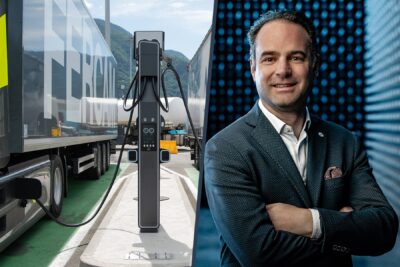
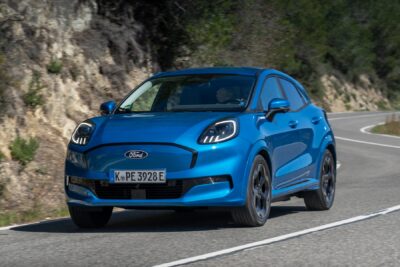
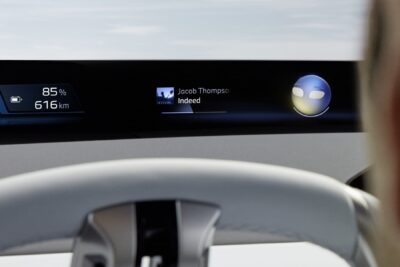
0 Comments